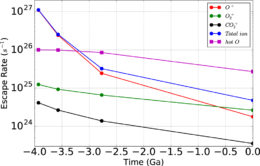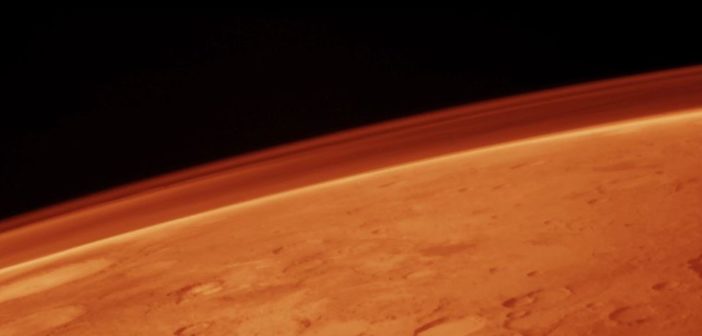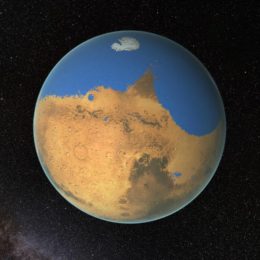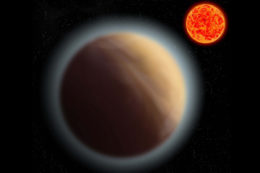In the search for life elsewhere in the universe, Mars has always represented an important target for exploration. What can this planet’s evolution — from a potentially habitable world to its current inhospitable state — tell us about the possibility of life on habitable exoplanets beyond our solar system?
A Past of Contrast
Life on Mars has been a topic of speculation for well over a century. Today, scientists no longer consider it very likely that inhospitable Mars is inhabited by alien life — but the red planet wasn’t always so unwelcoming.While today’s Mars is an arid desert, mounting evidence suggests that ancient Mars — the Mars of 4 billion years ago — not only had aqueous environments, but possibly even global oceans. Evidence for minerals, biogenic elements, and suitable energy sources for prebiotic chemistry increase the prospects for ancient Mars’s habitability.
So what caused the difference between this welcoming ancient Mars and the inhospitable Mars of the current epoch? Ancient Mars had one more thing: a thick protective atmosphere. Today’s Mars has only a thin, tenuous atmosphere remaining between its surface and the hostile conditions of space.
In a new theoretical study led by Chuanfei Dong (Princeton University), a team of scientists explore how Mars may have lost its atmosphere, causing the planet’s transformation to its current state.

Results from the authors’ simulations showing the ion (total ion shown in blue) and photochemical (heated atomic oxygen shown in magenta) escape rates over the Martian history. Ion escape rates were much higher 4 billion years ago. [Dong et al. 2018]
Loss of an Atmosphere
Dong and collaborators use sophisticated global 3D simulations of a Mars-like body to explore different types of atmospheric loss over time. By including the evolution of the ultraviolet radiation levels and solar wind strength, the authors can explore how atmospheric escape rates for ions and atoms have changed over Mars’s history.
Dong and collaborators find that Mars’s atmospheric ion escape rate, in particular, was more than two orders of magnitude higher 4 billion years ago compared to the present-day level. This is a result of the stronger solar wind and higher ultraviolet fluxes that came from the young Sun.
These high ion escape rates are more than enough to explain the rapid loss of Mars’s thick atmosphere very early in its lifetime — which leads to the depletion of any surface water Mars might have once had. Dong and collaborators argue that Mars might once have had a global ocean at least 2.6 m deep; according to the authors’ simulations, this water would have been depleted within 4 billion years, resulting in the arid Mars we observe today.
Beyond Our Solar System
What implications do these discoveries have on our search for life beyond our solar system? Early Mars may well be a prototype for small, rocky, potentially habitable planets orbiting solar-type stars. In this case, the authors’ results suggest that early atmospheric escape may be common among such planets, preventing life from easily persisting. The time-dependence of atmospheric loss is therefore an important element to keep in mind as we choose our targets and explore exoplanet candidates in the future.Citation
Chuanfei Dong et al 2018 ApJL 859 L14. doi:10.1088/0004-637X/810/2/136


